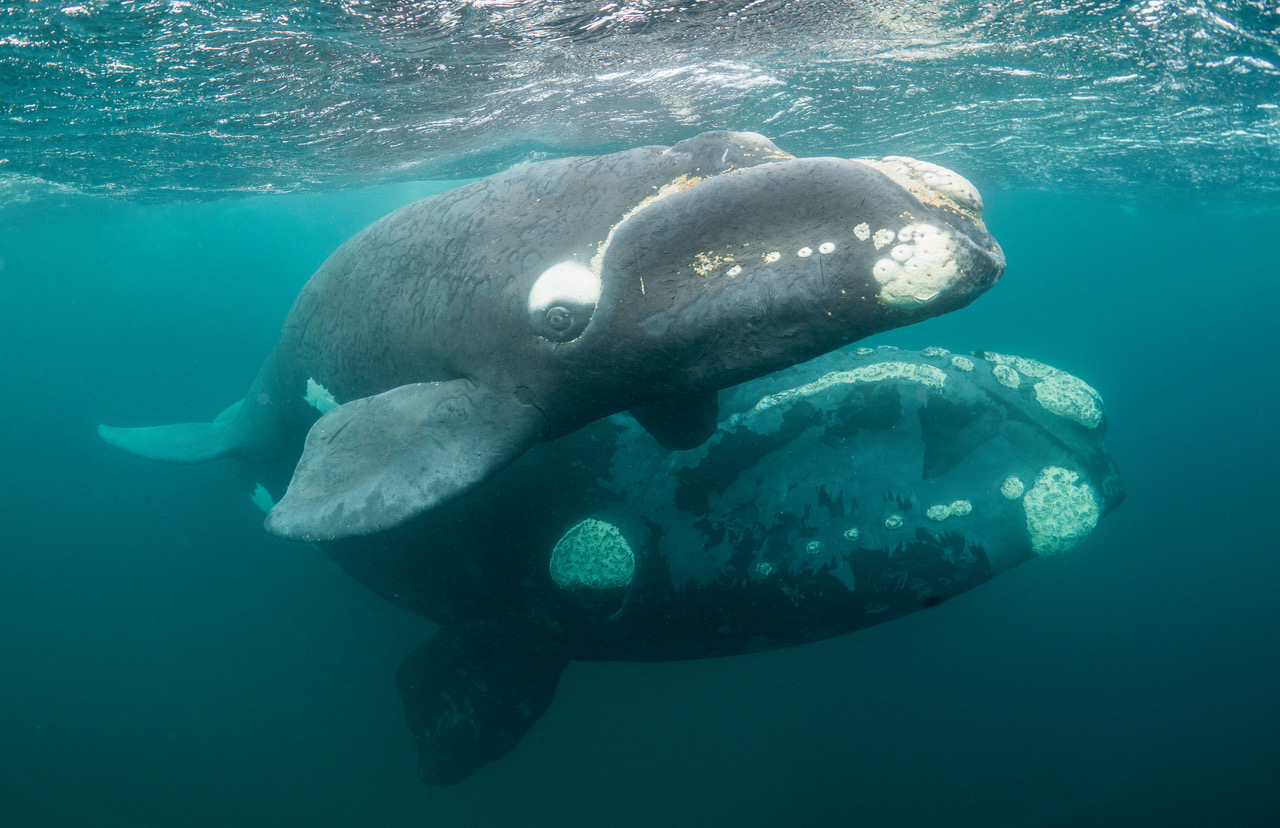
Southern right whale and her calf looking at the camera, Valdes Peninsula, Argentina.
Concerns By Save The Whales and Partner Organizations on Wind Farm Proposals
On April 18, 2023, Sea Life Conservation, Save The Whales, and Ocean Conservation Research submitted a 78 page joint statement t(with appendix) to the Bureau of Ocean Energy Management (BOEM) regarding its Draft Environmental Impact Statement for the Mayflower Wind (a.k.a. SouthCoast Wind) power plant, through the public comment process. To read the complete joint statement go to: https://www.regulations.gov/comment/BOEM-2023-0011-0137
Some of the concerns we raised are below.
- Claimed tonnage of carbon dioxide emissions spared annually is not supported by the disclosures in the DEIS which omits carbon emissions that will necessarily occur as the result of the project resulting from mining and materials production for refined steel and concrete materials. We've calculated for steel production and have yet to calculate for concrete. The infrastructure is massive; It is not appropriate to omit this when calculating emissions as other types of power plants do not require anywhere near the amount of materials to build.
- The cumulative effect of Mayflower Wind project combined with other wind power plants is an enormous increase the metal and concrete surface area in the marine environment (a.k.a marine industrialization or marine urbanization) is expected to cause a population explosion of sessile (attached) filter-feeding heterotrophs, which will reduce autotrophic plankton (photosynthetic plankton) density over the Outer Continental Shelf, and via this mechanism, its capacity to serve as a carbon buffer (which is important for pulling carbon dioxide out of the atmosphere) may be impaired.
- The findings of federal scientists at NOAA-Fisheries (National Marine Fisheries Service) were that the project represented a threat to the continued existence of the North Atlantic Right Whale. The agency wrote a letter in May of 2022 to BOEM recommending, for harm mitigation, a buffer zone bounded on the east by the depth line where the Nantucket shoals depth measures 30 m and extending southwest for 20 km (12 mi). There was a big exposé by Bloomberg News in November of 2022 that BOEM was not heeding the federal government's own scientists at NOAA-Fisheries. The Mayflower DEIS reveals that BOEM ruled out doing this because it considers the power purchase agreement to have irretrievably committed whatever portion of the lease area is necessary for power production outlined in the agreement, which was formed in 2020, three years before conclusion of the environmental inquiry as to the project's effects. This means the decision as to whether to commit ocean resources to any specific purpose is being made ahead of the environmental review which examines what the environmental consequences will be. This runs counter to the intent of the environmental law.
- Many forms of aquatic marine life have evolved to be highly dependent on sound because vision underwater is only useful for perceiving very short distances. Many forms of aquatic ocean life are only able to understand, perceive, or 'image' their environment using sound. The effects of sound on marine organisms is not receiving a proper examination. For most marine organisms, use of and response to sound is necessary for the execution of essential life processes. For some, vibration. The U.S. Offshore Wind program will make profound modifications to a very large portion of the ocean habitat on the outer continental shelf. The examination performed by BOEM and NOAA Fisheries has largely been focused on whether sounds expected to be generated by offshore wind activity are expected to be loud enough to cause permanent hearing losses. The scope so narrow that it will not be able to capture the environmental effects of this project that are reasonably likely to occur.
- We also found examination of effects on migratory birds in the DEIS to be inadequate. Many birds use infrasound for essential migration timing, ensuring that energy expenditure does not exceed energy reserves, and that deadly storms are avoided.
In December 2022, Save the Whales submitted their concerns (in a 48 page document) about the offshore wind projects with nine other conservation organizations. This was in response to the Federal Agencies' draft "Strategy for North Atlantic Right Whale and Offshore Wind." The 48 page response cited the federal agency Bureau of Ocean Energy Management's failure to take the right whale seasonal route and overall distribution into consideration to inform which ocean areas should be selected to become offshore wind lease areas for power plant development. Here is a link to the joint comment letter https://www.regulations.gov/comment/BOEM-2022-0066-0447
View all the organizations that participated here.
The entire remaining North Atlantic Right Whale population (NARW) has a mere 79 breeding females left and only 18 calves were born in all of last year. In the letter, it was pointed out that the federal agency selected an irreplaceable key feeding area of the endangered NARW which area is located south of Martha's Vineyard and Nantucket as the first ocean area to be leased for power plant development and approved for offshore wind activity, a location choice which "could hardly have been worse." The letter also called out the agency for its selection of a Wind Energy Area off the coast of South Carolina in what is critical habitat and key to passage to this whale's birthing/nursing grounds, and criticized the agency for continuing to downplay or fail to account for reasonably expected harmful effects of sea floor mapping for ocean lease site discovery (using sound-blasting equipment which ensonifies large areas) and its repeated failure to properly assess the impact turbine operational noise. The federal agency has not been transparent in its environmental reports about how many whales are estimated to die and or harmed as a result of the activities, nor have its estimates of effects been reasonable, given already-conducted studies and observations on this and other baleen whales which suggest that the ability for the whales to hear one another and its surroundings are essential for mating, parenting, and migration. In addition, the letter also called for research on and consideration of the effects of turbine noise and sound-blasting on the whale's food, a tiny marine animal called a copepod which research suggests are harmed by noise levels generated by certain offshore wind activities creating "kill zones" a mile and a half wide. These activities are serially repeated throughout the ocean lease areas over a large portion of the year until nearly the entire leased ocean area has been ensonified. These tiny animals may also be affected by the noise of turbine operation and it is likely that dense aggregations of them that the whale needs to start feeding will be redistributed on account of sea strata (layer) mixing from the ocean water running past gargantuan wind-turbine masts creating turbulent wakes. The letter called for making certain vessel practices mandatory, compliance audits of developers, and enforcement with temporary suspensions for non-compliance. It also urged that, given the endangered status of the NARW, its low remaining numbers, and sensitivity to further harms, effects on right whales in noise filled ocean waters during lease site sea-floor mapping, during development, and during wind-turbine power plant operation must be properly determined before lease and approval of additional large ocean areas for power plant development within their migration path and within high-risk areas that are critical to this species.
Right whales already face enormous obstacles with net entanglement. A well-written article in the Times, backed by the study used to show over 80%. of right whales to have fishing rope scars.
Right whale article January 11, 2023: https://time.com/6245181/save-north-atlantic-right-whale/
Whale entanglement study: https://www.int-res.com/abstracts/meps/v466/p293-302/
Volunteer and Help East Coast Groups
If you live on the East Coast and want to volunteer to help local organizations working on this issue please contact:
https://www.sealife-conservation.org
https://cleanoceanaction.org/be-the-solution-to-ocean-pollution
Concerned About Offshore Wind Farms and Whales On the East Coast of the U.S.?
TAKE ACTION: If you would like to be updated via email of actions items you can do as they arise, please email Maris@savethewhales.org
VOICE YOUR CONCERN TO STOP THE CHARACTERIZATION SURVEYS in the coastal waters off of New Jersey and New York in the New York Bight by COMMUNITY OFFSHORE WIND, LLC AND THE HARASSMENT OF OVER 14,000 MARINE MAMMALS BY “LEVEL B” PUBLIC COMMENTS DUE MAY 22, 2023. Community Offshore Wind has requested an incidental harassment authorization for the Outer Continental Shelf Lease Area OCS-A 0539 and associated Export Cable Route survey area. National Oceanic & Atmospheric Administration (NOAA), defines under the 1994 Amendments to the Marine Mammal Protection Act, harassment is statutorily defined as, any act of pursuit, torment, or annoyance which: Level A Harassment, has the potential to injure a marine mammal or marine mammal stock in the wild; and Level B Harassment, has the potential to disturb a marine mammal or marine mammal stock in the wild by causing disruption of behavioral patterns, including, but not limited to, migration, breathing, nursing, breeding, feeding, or sheltering but which does not have the potential to injure a marine mammal or marine mammal stock in the wild.
Review the entire public notice: https://www.federalregister.gov/documents/search
In the search bar enter then OCS-A 0539
Comments should be addressed to Jolie Harrison, Chief, Permits and Conservation Division, Office of Protected Resources, National Marine Fisheries Service and should be submitted via email to ITP.clevenstine@noaa.gov
by May 22, 2023.
THANK Congressman Van Drew (R-NJ) and Congressman Harris (R-MD) for their stand on a moratorium of the offshore wind farms until proper investigations of the whale deaths along the east coast take place. In addition, Van Drew held a public hearing in South Jersey on March 16, 2023 to introduce legislation that places a moratorium on all existing projects and legislation that will prohibit all future projects.
Congressman Van Drew
Ph: 202-225-6572
Email: info.vandrew@mail.house.gov
Congressman Harris
Ph: 202-225-5311
Email: https://harris.house.gov/contact
In addition, CONTACT your representatives and encourage them to echo the concerns of Van Drew and Harris. Click on the link below and enter your zip code in the top right corner to obtain the contact number for your representative.
https://www.house.gov/representatives
